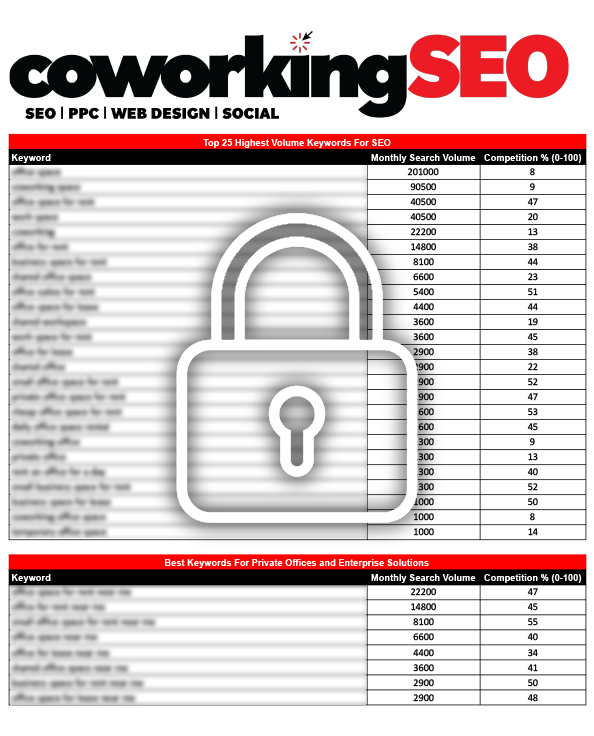One of the primary ways of advertising commercial properties is through real estate websites like LoopNet and CoStar, which have gained prominence within the business community and provide property owners with tools for creating detailed listings including square footage, amenities, and location details. Furthermore, websites like OfficeSpace.com specialize exclusively in office space listings to give those in search of office space a platform dedicated solely to them.
Expanding beyond commercial real estate platforms, general real estate websites like Zillow and Realtor can also serve as effective channels. While traditionally associated with residential listings, these websites often include commercial sections that can help reach a broader audience – making this approach particularly useful in attracting small businesses and entrepreneurs seeking flexible office spaces.
Local classifieds and newspapers remain relevant and accessible methods for advertising office space for rent. Platforms like Craigslist enable direct engagement with local businesses and individuals searching for commercial properties. Furthermore, placing advertisements in local newspapers or business journals increases the chances of finding an ideal tenant quickly and efficiently.
Social media’s significance in our interconnected world cannot be overstated. Platforms like LinkedIn and Facebook enable property owners to leverage existing professional networks by sharing listings in professional groups or on company pages; creating an exponential word-of-mouth effect as their peers share it among themselves.
Engaging with local business communities through networking events and industry associations is another effective strategy. Attending relevant events may lead to direct interactions with potential tenants. Forming connections within these networks may result in referrals for your office space for rent as well as greater exposure.
How to Lease Office Space in Eight Steps

How to Move or Lease Your First Office
It can be daunting to lease office space or move into a new location. The process of evaluating space needs, creating budgets, touring the space, negotiating the lease, and moving is not easy. Leasing space can be difficult because there is no standard lease, building or landlord. Even though each tenant’s leasing journey is unique, the general steps they must take are very similar.
These steps include:
1. Learn about the leasing process.
2. Decide if you need to hire a broker.
3. Consider your space requirements.
4. Create a budget.
5. Choose a building and a location.
6. Negotiate with the landlord.
7. Create space.
8. Pack and move (if applicable)
1. Get to Know the Leasing Journey
Understanding the steps and the time it takes to complete each step will help you set realistic expectations for the time needed to secure an office. It may only take a couple of months to get a small block of 2,500 sq. ft. in place, but larger blocks of up to 25,000 sq. ft. may require several years to build and secure to your specifications.
Timeline and Key Steps for Leasing Office Space
2. How to Determine If You Should Hire A Tenant Representative Broker
It is not mandatory to hire a tenant representative broker. However, hiring someone to represent your interests can never be a bad thing. You should keep in mind that: 1) A landlord broker will be contractually bound by the landlord to negotiate for them. If you work with them directly, it is important to understand whose interests are being prioritized.
Do I need to hire a tenant rep broker?
3. Consider Your Space Needs
The first step is to determine how much office space you will need and how it will be set up. You can generate an estimate by performing a quick calculation on a piece of paper. Multiply the number of employees by the average square footage per worker in an office in the U.S. This figure is currently 180 square feet, according to CoStar.
If you have 40 workers, each of whom will need a desk or an office, as well as a few meeting rooms and a pantry, then you’ll need approximately 7,200 square foot. This number will vary depending on many factors. For example, the size of conference rooms, the kitchen, the number of offices, whether you want to create a reception, the window lines and column spacing of the building you are looking at, etc. You might then search for space between 6,000 and 9,000 square foot blocks.
How To Determine Your Office Space Needs
4. Create a Budget
It is important to know how much rent you can afford. Again, a quick calculation on a napkin can be used to generate an approximation. If you continue with the above example, and pay $30 per foot of space per year, your rent for the entire year will be $180,000.
You will want to know if the figure of $30 per square foot is offered as a full service or triple net. In the former case, all taxes and fees such as utilities and management are included in the rent. The latter means you have to pay these expenses on top of the $30 figure. These operating expenses vary greatly depending on the building and market. They can range anywhere between 2.5% and 25% of the rent.
Office Rent 101 – The Difference between NNN and Gross Leases
Renters must also budget for a number of upfront costs, such as legal fees, first-month rent, moving expenses, and construction fees.
Budget for key upfront costs when leasing office space
5. Select a Location and a Building
The search for office space is a complex process that involves many factors. These include determining the needs of key stakeholders within your organization, determining whether there is a specific client base that you must be near, and assessing the importance of employee commute patterns. The tax structure in certain regions and the labor costs may also have a significant impact on your decision.
After you have focused on specific buildings, there are still other things to consider. Are the floorplates large enough to allow you to build out your company? This is just one of the many criteria that you should consider when evaluating locations, submarkets neighborhoods, or buildings.
How To Choose a Location for Your Office and Lease Property
6. Negotiate with the Landlord
You or your broker must negotiate with different landlords to get the best leasing package. You can communicate with the landlords of these properties through an RFP. Landlords will expect you to be considering several properties. You can negotiate the best lease terms for your business by being open to several viable options.
Rents, concessions like tenant improvement allowances or several months of free rent, reduced costs, options for expansion and renewal, and the right to sublet your space should all provide your business with maximum flexibility.
Flexible Lease Negotiations Beat Hardball
7. Build Out Space
The conditions of office space can vary from a “shell” with exposed columns and wires, unfinished ceilings and walls, and unfinished walls, to “turnkey” offices that are ready to occupy. There are also spaces that have been partially built or demolished and need varying levels of construction. It is important to know how much the construction will cost, regardless of whether the spaces need little or a great deal of work.
Many landlords offer “tenant improvements” packages that include funds to cover the majority or all of your building costs. When comparing landlord offers, keep in mind that $100 per square foot may not be enough in some buildings. So, estimate construction costs for different offers before signing a lease.
- What is the Tenant Improvement Allowance?
- What is the cost of building a new office?
- Mastering Office Build-Out Process
8. Pack Up and Move
An office move includes notifying employees, deciding what furniture to keep, and purging old documents. It also involves ensuring the lights at the new location are working. After months of searching and touring, calculating the costs, negotiating, and building, this is the final step. Although the steps of moving seem simple, it’s important to plan and set expectations for your employees, particularly. Be prepared for every phase of the move, from hiring and vetting movers to making sure your computers are running.







